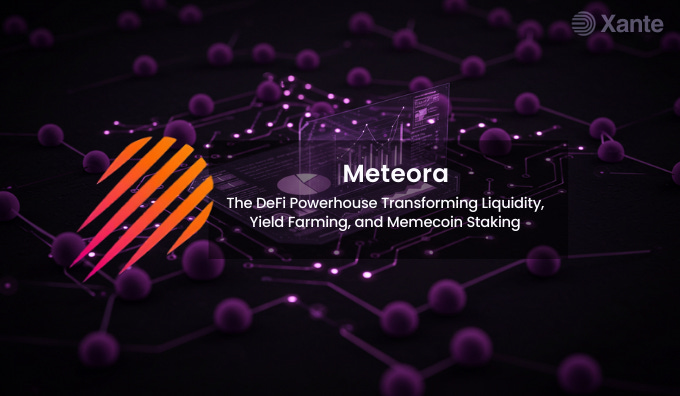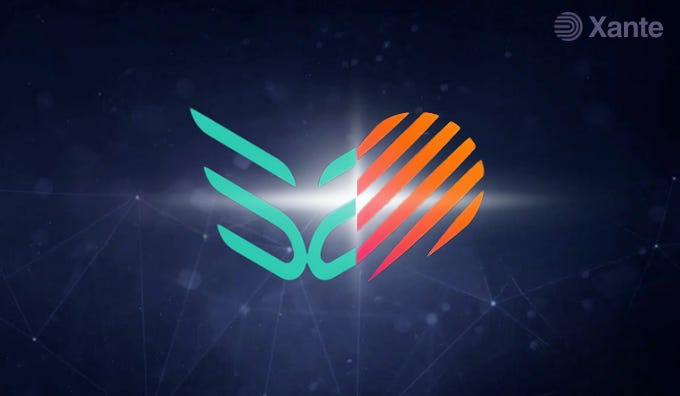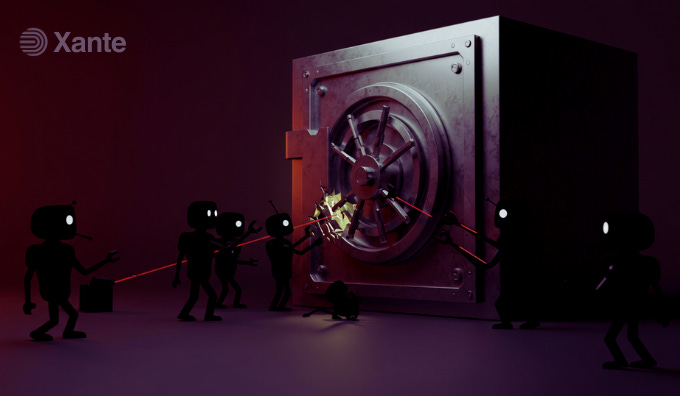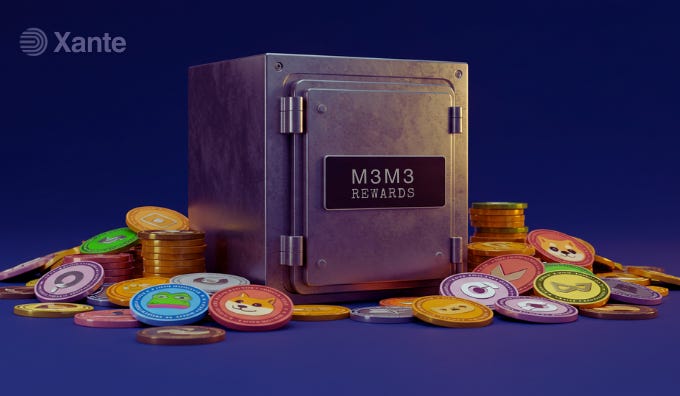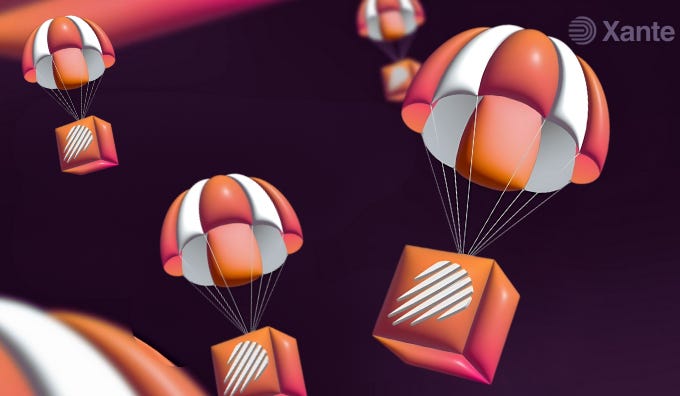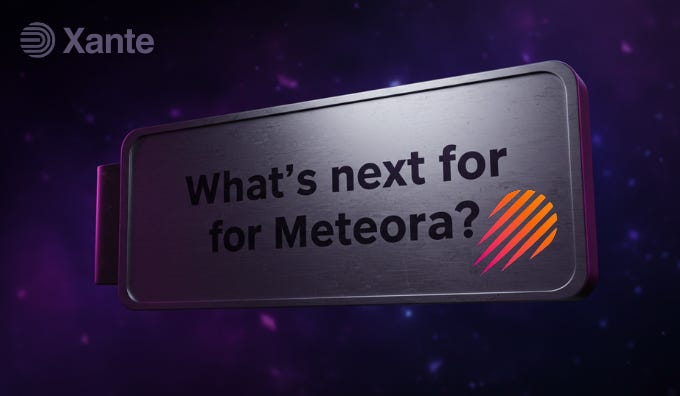Meteora: The DeFi Powerhouse Transforming Liquidity, Yield Farming, and Memecoin Staking
Is Your Crypto Sitting Idle? Here’s How Meteora DEX Can Put It to Work
Have you ever wondered how much potential yield your idle crypto could generate if it wasn’t just sitting in your wallet?
In DeFi, unused liquidity is a missed opportunity, one that Meteora DEX is solving through automated liquidity optimization and real-time yield farming. Instead of allowing liquidity to remain stagnant, Meteora reroutes it into lending pools, maximizing returns for liquidity providers (LPs) and traders alike.
But there’s more, from gas-optimized Solana transactions to sniper bot-resistant token launches, Meteora is pushing the boundaries of DeFi innovation.
Enter Meteora, a next-generation liquidity hub on Solana that ensures every dollar of liquidity is optimized for yield, efficiency, and maximum returns. With innovative features like Dynamic Liquidity Market Maker (DLMM), Dynamic Vaults, Alpha Vault, and Memecoin Pools, Meteora is rewriting the rules of DeFi liquidity.
This blog post will break down everything you need to know about Meteora; its history, features, benefits, potential airdrops, and even the recent controversies surrounding it. By the end, you’ll have a clear picture of why this platform is making waves in the DeFi space.
What is Meteora DEX?
Meteora DEX is a liquidity optimization protocol on Solana that ensures idle crypto assets are put to work. Instead of relying on traditional AMMs (Automated Market Makers), it dynamically reallocates liquidity to maximize yield.
Real-World Example
Imagine you are an LP on Uniswap providing USDC-SOL liquidity. If no one trades within your price range, your capital sits idle, earning nothing.
Now, if you provided liquidity on Meteora, your idle assets could be:
Automatically redirected to lending markets like Solend
Earn yield instead of remaining stagnant
Reallocated in real-time to optimize earnings
This makes Meteora’s Dynamic Liquidity Market Maker (DLMM) a powerful tool for LPs looking to increase capital efficiency.
Meteora: A Brief History of Reinvention
Meteora’s journey is a story of resilience and adaptation in the ever-changing world of DeFi.
• 2021: The Birth of Mercurial Finance
Meteora started as Mercurial Finance, one of Solana’s first stable AMMs. At its peak, it held over $200 million in Total Value Locked (TVL), playing a crucial role in stablecoin liquidity.
• 2022: The FTX Collapse & The Reset
The downfall of FTX in late 2022 severely impacted Mercurial Finance, with a significant portion of its MER token holdings locked on the exchange. Instead of shutting down, the team pivoted and rebuilt the project into Meteora introducing new mechanisms, tokenomics, and liquidity innovations.
• 2023-Present: Growth & Innovation
Meteora now operates as one of Solana’s top liquidity protocols, optimizing idle capital, reducing slippage, and introducing novel DeFi solutions for traders and liquidity providers.
Key Features of Meteora DEX
1. Maximized Liquidity Efficiency
Traditional AMMs follow 50/50 liquidity ratios, often leading to inefficient asset utilization. Meteora breaks this restriction by dynamically adjusting liquidity across pools and lending platforms.
2. Gas-Optimized for Solana
Meteora minimizes transaction costs and confirmation times, making it one of the most gas-efficient DEXs on Solana. With Solana’s high throughput (65,000 TPS), this ensures smooth trading even during market volatility.
3. Real-Time Fee Adjustments
DLMM pools adjust trading fees dynamically based on market conditions, allowing LPs to earn more during periods of high volatility.
Example: If a memecoin like BONK experiences a surge in demand, LPs can automatically charge higher fees without manually adjusting settings.
4. Customizable Liquidity Control
Unlike Uniswap’s fixed 50/50 pools, Meteora allows users to choose price ranges, fee tiers, and exposure levels, making capital deployment more flexible.
Key Products of Meteora
Meteora isn’t just another DEX, it’s an advanced liquidity infrastructure built to maximize efficiency. Here’s how:
Dynamic Liquidity Market Maker (DLMM): Smarter Liquidity Provision
DLMM introduces zero-slippage price bins, where trades occur within tight price ranges, reducing slippage risks. Traditional AMMs like Uniswap v2 or PancakeSwap require LPs to hold a 50/50 token ratio, often leading to impermanent loss and capital inefficiency.
DLMM solves this by:
Allowing LPs to customize liquidity ranges instead of locking funds in static pools.
Implementing real-time fee adjustments, where fees increase during volatility to reward liquidity providers.
Offering zero-slippage price bins, ensuring precise trade execution, outperforming even Uniswap v3.
Example: If you’re trading SOL/USDT, traditional AMMs may result in price slippage due to inefficient liquidity distribution. With DLMM’s zero-slippage bins, trades execute at the expected price, making it ideal for institutional traders.
Alpha Vault: Anti-Bot Protection for Fair Token Launches
One of the biggest issues in crypto launches is sniper bots—automated scripts that buy large token amounts before retail investors can participate.
Meteora’s Alpha Vault protects new token launches by preventing sniper bots from manipulating price discovery.
Example: A new Solana project launching its token can use Alpha Vault to:
Restrict large buys from automated bots
Distribute tokens fairly among real investors
Set lock-up periods to reduce pump-and-dump risks
Alpha Vault helps prevent this by:
Setting maximum purchase limits for fair distribution.
Customizing lock-up & vesting periods to avoid pump-and-dump scenarios.
Rewarding real supporters, ensuring tokens go to genuine investors instead of automated bots.
Real-World Example: When a new Solana-based token launches, teams often struggle with bots hoarding supply. Using Alpha Vault, projects can create a fairer launch, ensuring retail investors aren’t priced out.
Dynamic Vaults: The First Ever Dynamic Yield Infrastructure
Traditional yield vaults follow static allocation strategies, which often miss better opportunities.
Meteora supports multiple pool types:
• Stable Pools (USDC/USDT) → Lower risk, low volatility
• Volatile Pools (SOL/BTC) → High risk, high reward
• Memecoin Pools (WIF/BONK) → Permanently locked liquidity for long-term sustainability
Meteora’s Dynamic Vaults change that by:
Rebalancing liquidity every few minutes, redirecting assets to lending platforms with the best APY.
Integrating with Solend & Tulip, optimizing returns automatically.
Using security factors like protocol audits & insurance to balance risk and yield.
Example: If you deposit USDC into a traditional yield farm, it may sit in the same pool for weeks, earning a fixed APY. Meteora’s Dynamic Vaults, however, constantly scan for better lending rates, automatically reallocating funds to maximize earnings.
M3M3 Stake-to-Earn: The Game-Theoretic Memecoin Revolution
Memecoins have historically been high-risk, high-reward assets. Meteora introduces M3M3, a new staking model inspired by the (3,3) game theory approach.
Incentivizes long-term staking, the more users stake, the higher the rewards.
Prevents mass sell-offs, ensuring memecoin liquidity remains locked.
Rewards top stakers, increasing competition and demand for participation.
Example: If all holders of a memecoin like DOGE or SHIB staked their tokens in M3M3, they would all earn passive rewards instead of just relying on price speculation.
Meteora Airdrop: How to Qualify?
Airdrop Speculation (2025)
Meteora may distribute 10% of its MET tokens via an airdrop with early liquidity providers getting rewarded based on a points-based system.
Earn 1 point per $1 of TVL held per day.
Get 1,000 points per $1 of fees generated.
Liquidity providers before Dec 1 get a 1.3x multiplier.
This mirrors the success of past Solana airdrops, such as:
Jupiter’s airdrop, where early users earned thousands of dollars.
Jito’s airdrop, which rewarded participants based on Solana staking activities.
Actionable Tip: Providing liquidity in DLMM pools (TVL > $800M) is the best way to farm points.
Recent Controversies: Market Manipulation Allegations
Meteora faced scrutiny In February 2025, when DefiTuna’s founder, Moty, accused Kelsier Ventures of insider trading on M3M3 tokens, extracting $200M+ from memecoin projects.
• CEO Hayden Davis allegedly provided early access to influencers
• Projects affected: AIAI, ENRON, MATES, LIBRA
• Meteora co-founder Ben Chow resigned amid backlash
Jupiter is conducting an independent investigation.
Key Takeaways
Meteora DEX enhances DeFi liquidity efficiency through DLMM and Dynamic Vaults
Sniper bot-resistant token launches with Alpha Vault
M3M3 rewards long-term stakers, stabilizing memecoin ecosystems
Potential airdrop opportunities in 2025 for early adopters
Controversy over market manipulation raises concerns about transparency
Future Outlook: What’s Next for Meteora?
Potential Solana ecosystem dominance → Competing with Jupiter & Orca
New leadership post-controversy → Rebuilding trust in the community
Expansion of DLMM pools → Offering more yield-optimized strategies
Final Thoughts
Meteora DEX is pioneering next-generation liquidity solutions in DeFi. From Dynamic Vaults to DLMM pools, it offers a more capital-efficient and user-friendly experience than traditional AMMs.
Will you be part of the airdrop? Start providing liquidity and farming points today.
Join the discussion: What are your thoughts on Meteora’s potential?
Drop a comment below!
For daily updates, follow us on all socials; Instagram, Twitter, Telegram, and TikTok. Subscribe to our newsletter for expert analysis and join our WhatsApp channel to continue the conversation.
This article is for educational purposes only and should not be considered financial advice. Always conduct your own research (DYOR) before making any investment decisions.


